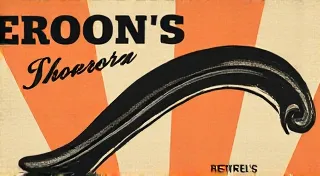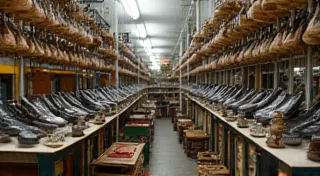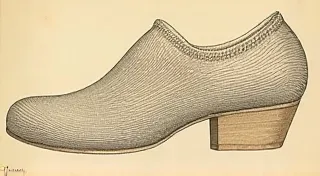The Rise and Fall of the Telescopic Shoehorn: A Design Innovation
For those of us captivated by the subtle beauty and practicality of vintage shoehorns, the telescopic model holds a unique fascination. Often overlooked amongst the ornate ivory and silver examples, the telescopic shoehorn represents a fascinating intersection of design innovation, practicality, and changing social trends. This article delves into the history, design, popularity, and eventual decline of this clever accessory, exploring why it remains a compelling find for collectors of vintage shoehorns.
The Need for Portable Practicality
The late 19th and early 20th centuries were periods of unprecedented travel. The rise of railroads and steamships made exploration and leisure travel accessible to a wider segment of the population. This burgeoning travel culture demanded practicality. Bulky accessories were a burden, and finding a way to seamlessly integrate essential tools into one's journey became a priority. While the elegant, often bulky, shoehorns found in Victorian homes were perfect for domestic use, they were far less appealing for the modern traveler.
Enter the telescopic shoehorn. Born from this need for portability, these ingenious devices were designed to collapse into a compact size, easily tucked into a pocket, handbag, or luggage. Their invention speaks to a time when design focused on functionality as much as aesthetics – a balance many vintage collectors find particularly appealing.
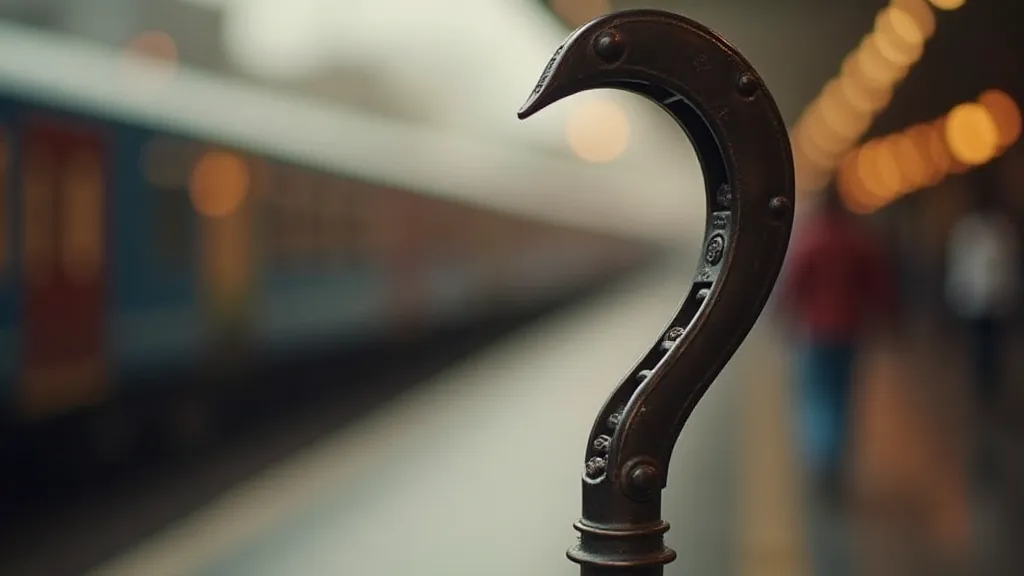
The Mechanics of Innovation
The telescopic shoehorn typically consisted of two or three nested metal tubes, usually brass, steel, or occasionally silver-plated. A simple lever or spring mechanism allowed the tubes to slide out, extending the length of the shoehorn to a usable size. The quality of construction varied greatly. Cheaper versions might use thinner metal and less precise mechanisms, prone to jamming or bending. High-end examples were often crafted with meticulous detail, using sturdy metal and smooth-operating slides. Some featured decorative engravings or applied embellishments, reflecting the prevailing decorative styles of the era.
The mechanics were relatively straightforward, yet clever. The challenge lay in creating a robust mechanism that could withstand repeated use and the rigors of travel. The initial designs often involved a simple friction fit between the tubes, which could be prone to loosening over time. Later versions incorporated locking mechanisms or spring-loaded detents to secure the extended length and prevent accidental collapse. The materials used to craft these items were not arbitrary choices; they were often tied to their perceived value and the message they conveyed about the owner’s social standing – something explored in greater detail in an article about shoehorns and social class.
Peak Popularity: The Edwardian Era and Beyond
The telescopic shoehorn enjoyed its greatest popularity during the Edwardian era (1901-1910) and into the 1920s. This period was characterized by a renewed sense of optimism and a love of innovation. The telescopic shoehorn perfectly embodied this spirit – it was modern, practical, and stylish. Advertisements for these devices frequently emphasized their portability and convenience, targeting travelers, businessmen, and fashionable women.
They weren’t solely a travel accessory, though. Even those who didn't frequently journey abroad appreciated the compact nature of the telescopic shoehorn. They offered a discreet and convenient solution for those who preferred a less ostentatious display of accessories. The rise in popularity wasn't solely based on function; advertising played a significant role in shaping desire, as reflected in shoehorn advertising campaigns of the period.
Materials and Variations
While brass and steel were the most common materials, more luxurious examples utilized silver or silver-plated metal. These were often given as gifts or purchased by individuals seeking a touch of elegance. The handles themselves could be quite diverse, ranging from simple rounded shapes to more ornate designs incorporating decorative motifs. Some examples even featured inlaid mother-of-pearl or other decorative elements.
Beyond the basic design, variations began to appear. Some telescopic shoehorns incorporated a small hook or ring for attachment to a handbag or belt loop, further enhancing their portability. Others included a small mirror, catering to the vanity of the user. The level of detail and craftsmanship varied widely, reflecting the range of manufacturers and the intended market. It’s interesting to consider how the specific materials and embellishments used went beyond mere aesthetics, and served to communicate something about the owner’s status and taste. Further analysis of these subtle clues can be found when examining shoehorn handles and their diverse materials.
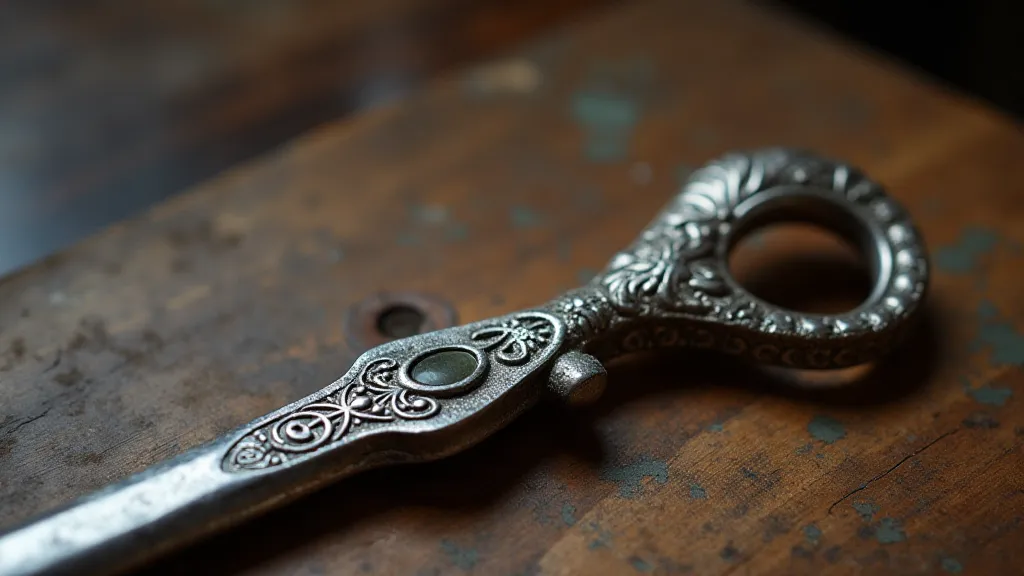
The Decline and Legacy
The popularity of the telescopic shoehorn began to wane in the 1930s and 1940s. Several factors contributed to this decline. The rise of more comfortable and flexible footwear reduced the need for shoehorns altogether. The Great Depression impacted disposable income, making luxury accessories less desirable. Post-war austerity measures further curtailed spending on non-essential items.
Perhaps most significantly, the shift in fashion and lifestyle moved away from carrying multiple accessories. The emphasis moved towards streamlined simplicity, and the telescopic shoehorn, with its somewhat clunky mechanism, felt increasingly dated. The very essence of its appeal – its practicality and ability to be both compact and functional – eventually worked against it as fashion trends shifted towards minimalism and streamlined aesthetics. Collectors often find the subtle elegance of these items captivating, and the relative scarcity contributes to their collectibility.
Collecting Telescopic Shoehorns Today
Today, telescopic shoehorns are relatively rare finds compared to their more ornate counterparts. This rarity, coupled with their innovative design and historical significance, makes them highly sought after by collectors of vintage accessories.
When collecting, several factors influence value:
- Material: Silver and silver-plated examples command the highest prices.
- Condition: Well-maintained examples, with smooth-operating mechanisms and minimal wear, are more valuable.
- Design and Ornamentation: Unusual or elaborate designs, particularly those incorporating decorative elements, can increase value.
- Rarity: Certain manufacturers or models are more scarce than others.
The variations observed in telescopic shoehorns are a testament to the creativity and skill of the artisans who crafted them. Some, like those with intricate engravings or precious metal accents, are particularly prized by collectors. Furthermore, the scarcity of certain models contributes significantly to their value in the antique market. The evolution of design throughout the years also provides a fascinating glimpse into the changing tastes and preferences of different eras. Identifying and appreciating these nuances can significantly enhance the enjoyment of collecting these unique accessories.
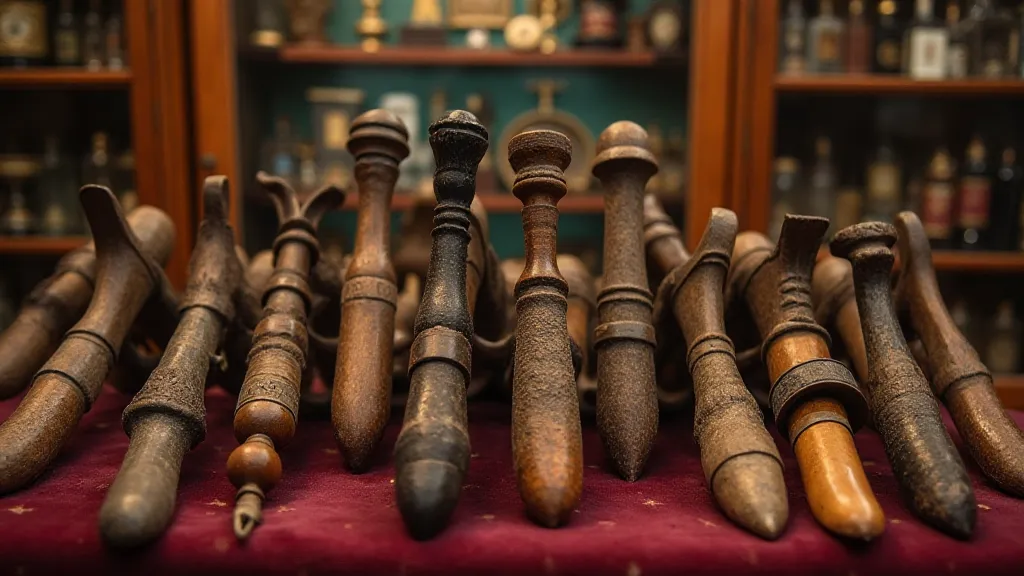
Conclusion
The telescopic shoehorn represents a fascinating chapter in the history of accessories and design innovation. It’s a testament to the human desire for practicality and elegance, even when on the move. While it may have faded from everyday use, its legacy endures as a unique and collectible piece of vintage history. For those with an appreciation for clever design and a passion for the past, the telescopic shoehorn offers a tangible link to a bygone era of travel and style. Its story serves as a reminder that even the most ingenious inventions are subject to the cyclical nature of trends and the ever-evolving landscape of consumer preferences. The rise and fall of this clever accessory highlights the importance of adapting to change and the enduring appeal of well-crafted objects that embody a specific moment in time.
